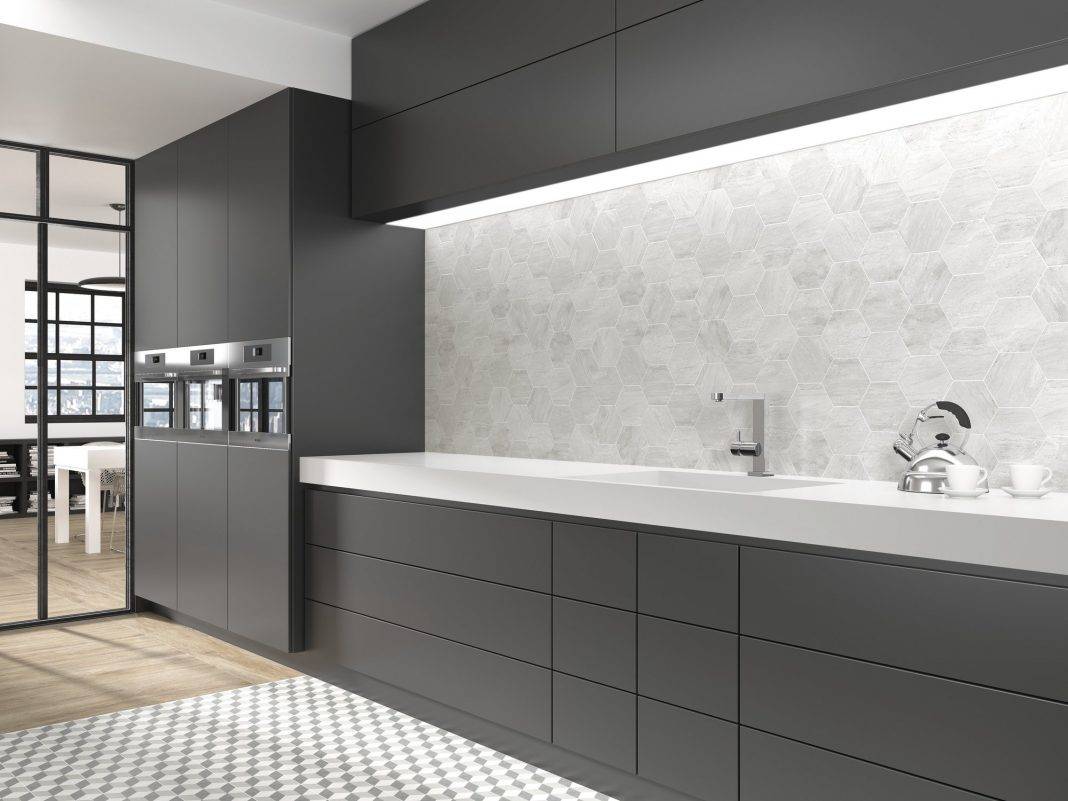We’ve gone through a lot of style eras in the past century. Maybe more than at any other time in the last millennia. With all those changes, and with so many homes built in the same timeframe, it can sometimes be tricky to know what to put in your home to best channel the time it was built in. Well, we at EMC Tiles are here to help with a whistlestop tour of 8 of the most impactful interior design trends of the 20th Century and find you a tile to match each.
Modernism (1880-1940)
Following the industrial revolution came the transformative era of Modernism, a movement defined by sleek design, clean lines, and an absence of clutter. A core tenet of this interior design style is that form follows function, which makes choosing a tile to match this movement rather simple. The hexagon is the most efficient shape for covering a surface, proven by both science and nature on multiple occasions, and so what better choice for a tile which represents modernism than the Verona range from Ape tiles. These sleek tiles, available in both grey and white, can be used both on floors and walls.


Art Deco (1910-1940)
Also inspired by the Industrial Revolution, Art Deco takes a different approach. Rather than embracing the drive for efficiencies that Modernism took from the Industrial Revolution, Art Deco instead took on the movement as a whole with an emphasis on large features and metal finishes. Key markers of Art Deco design are the solidity of objects, everything has a weight to it matched only by its symmetry. With that in mind, the Twenty Range from Edimax is a surefire way to bring Art Deco back into your home. With much of the range having 8 axis of symmetry and those which do not form part of a wider repeating pattern, the perfect Art Deco tile for you is somewhere in this range.

De Stijl (1917-1931)
A departure from the Industrial Revolution, De Stijl was a Dutch-style movement born in the aftermath of World War 1. Its material of choice was plastic and the opportunities this new material represented, while its inspiration was the desire to develop a more utopian aesthetic to counteract the horrors of the Great War. It makes great use of bright primary colours, straight lines, and geometric forms. With that in mind, the Primus Tiles range of plain-coloured tiles is a fantastic tool for capturing this vibrant moment in design history.


Bauhaus (1920-1934)
Perhaps the most long-lasting and influential design movement of the twentieth century, if not of all time, Bauhaus originated in the eponymous German art school. It’s been described in many ways over the years, but the most succinct would have to be “arts and crafts meets modernism”. Bauhaus is the blending of mass production with expressions of individuality, an acknowledgement that we are all the same yet different, and that both sides of this dichotomy should be celebrated. That said, it was still a movement of function over form and of making the functional beautiful. That is why the Bauhaus movement championed concrete as a domestic material, a medium that is practical, durable, and provides a plain backdrop to add individuality. The downside of concrete however is that it does take a long time to set and an even longer time to get the right finish with.
Not so for the Azuma range from Imola, which offers medium and large format tiles in a beautiful cement finish. When combined with their Azuma Outdoor range you can make a seamless transition from inside to outside, once more bringing functionality and form into a harmonious whole.


Join us next weekend for an exploration of Surrealism, Mid-Century Modern, Scandinavian Modern, and Post Modernism.








